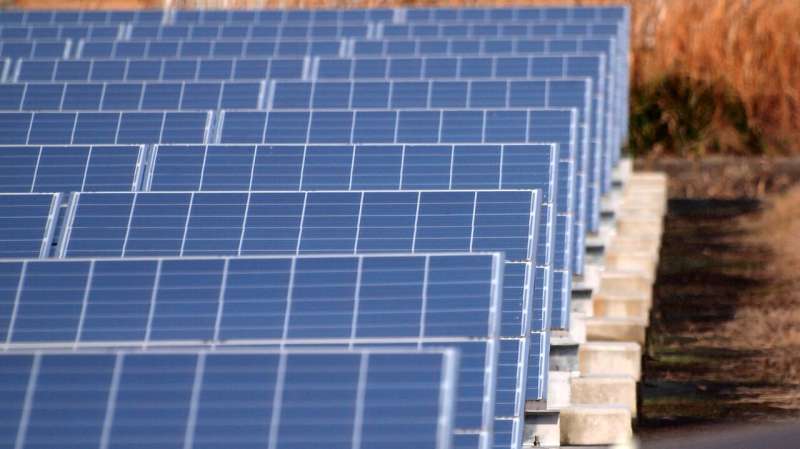Reducing water usage in concentrated solar power plants with radiative cooling and cold storage

To deal with the current climate and energy crisis, the world is moving towards a sustainable energy economy. Concentrated solar power (CSP) plants are becoming a major player in this field. CSP plants use lenses and mirrors spread across a vast region to concentrate sunlight onto the receiver of solar panels and then convert the solar power into electrical power through steam engines or turbines. The steam engines need to be cooled off regularly to maintain the high-power conversion efficiency.
Generally, steam engine power plants use the water-intensive wet cooling method to dissipate the waste heat generated. However, such processes can lose large amounts of water due to evaporation and, therefore, demand a constant water supply. This poses a serious problem as most CSP plants are set up in hot, dry regions with limited water resources.
In a recent study first published online on 25 February 2022 in Energy Storage and Saving, a team of researchers led by Prof. Ronggui Yang from Huazhong University of Science and Technology, China found a way to make the cooling process less intensive. They developed a cooling method that combined radiative cooling with cold storage and, when simultaneously used with wet cooling, substantially reduced the amount of water consumed annually.
When asked about the motivation behind their study, Prof. Yang says, "harsh environments, along with growing water demands in other sectors such as agriculture, industry, and domestic uses, severely competes with power plants for water resources. As a result, we wanted to develop a technique that would make wet cooling of power plants less water-intensive and still maintain the desired thermal efficiency."
The auxiliary cooling technique developed by the team combined the best of both dry and wet cooling. Radiative cooling with cold storage is a dry cooling method that involves coolers made of highly solar reflective material with the capability to direct heat dissipation at selective infrared wavelengths into deep space with no absorption in the surrounding environment.
The team added a radiative cooling system to the evaporating cooling tower of a reference CSP plant similar to the Mojave Solar Project in USA. To test the potential of the designed system, they created computer models to track the water-saving potential of daytime-only as well as day-night radiative cooling systems. The team studied the cooling and water saving potential in more than 3000 locations of different weather conditions in the country.
The results showed that the annual consumption of water could be reduced by 40—60% in the hot southwestern region of the US by adopting daytime-only radiative cooling. However, if the radiative systems along with cold storage worked day and night, the annual water saving potential could become as high as 65–85%.
The proposed method provides an efficient way of maintaining the thermal efficiency of wet-cooled CSP plants with reduced water consumption. The insight gained in this study could be helpful for designing advanced round-the-clock cooling systems for CSP plants. "The global water consumption by the power generation sector is expected to double within the next four decades. Our supplemental cooling system design can help tackle the increasing water demand for power plants located in water-stressed regions amid deserts and arid regions," concludes Prof Yang.
More information: Ablimit Aili et al, Radiative Cooling and Cold Storage for Concentrated Solar Power Plants, Energy Storage and Saving (2022). DOI: 10.1016/j.enss.2022.02.002

















